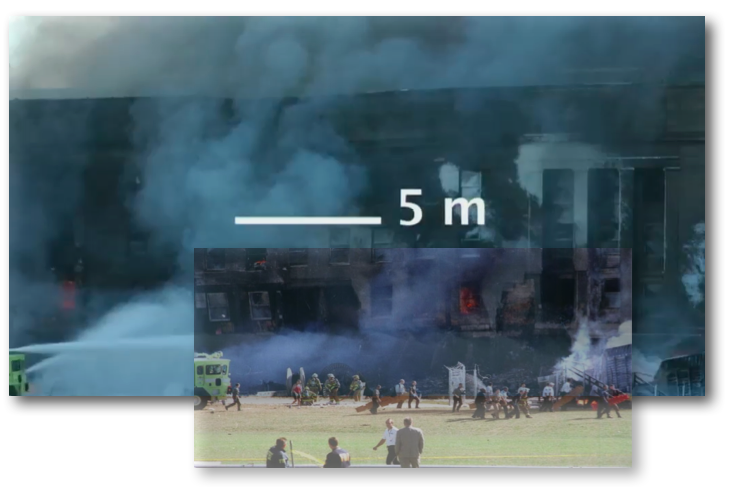The Emerald Knight ha scritto:
Mah, io ricordo che prima dell'attentato ci fosse comunque divieto di portare coltelli e forbici sugli aerei. Certo, magarì i controlli erano meno accurati ma si doveva comunque consegnare la borsa per il controllo e passare sotto il metal detector.
MR. BILL JOHNSTONE: Next we come to checkpoint screening. With respect to checkpoint screening, federal rules required the air carriers to conduct screening to prevent or deter the carriage aboard airplanes of any explosive, incendiary, or a deadly or dangerous weapon on or about each individual's person or accessible property, and the carriage of any explosive or incendiary in checked baggage.
Passenger checkpoint screening is the most obvious element of aviation security. At the checkpoint, metal detectors were calibrated to detect guns and large knives. Government-certified X-ray machines capable of imaging the shapes of items, possessing a particular level of acuity were used to screen carry-on items. In most instances, these screening operations were conducted by security companies under contract with the responsible air carrier.
As of 2001, any confidence that checkpoint screening was operating effectively was belied by numerous publicized studies by the General Accounting Office, the Department of Transportation, the Office of the Inspector General. Over the previous 20 years, they had documented repeatedly serious chronic weaknesses in the systems deployed to screen passengers and baggage for weapons and bombs. Shortcomings with the screening process had also been identified internally by the FAA's own assessment process.
Despite these documented shortcomings of the screening system, the fact that neither a hijacking nor a bombing had occurred domestically in over a decade was perceived by many within the system as confirmation that it was working. This explains in part the view of one Transportation Security official who testified to the Commission that the agency thought that it had won the battle against hijacking. In fact, the Commission received testimony that one of the primary reasons that the CAPPS consequences were restricted was because officials thought that checkpoint screening was working.
The evolution of checkpoint screening illustrates many of the systemic problems that faced the civil aviation security system in place on 9/11. The executive and legislative branches of government and the civil aviation industry were highly reactive on aviation security matters. Most of the aviation security systems features had developed in response to specific incidents rather than anticipation. Civil aviation security was primarily accomplished through a slow and cumbersome rule-making process, a reflection of the agency's conflicting missions of both regulating and promoting the industry.
A number of FAA witnesses told the Commission that this rule-making process was the bane of civil aviation security. For example, the FAA had attempted to set up a requirement that it would certify screening contractors. The FAA re-authorization of 1996, in fact, had directed the FAA to take such action. The 1997 Gore Commission endorsed it but the process of implementing screener certification had still not been completed by September 11th, 2001.
Those are systemic observations, but to analyze the 9/11 attack, we had to focus on which items were prohibited and which were allowed to be carried into the cabin of an aircraft as of that date. FAA guidelines were used to determine what objects should not be allowed into the cabin of an aircraft. And I stress again that this is the system that was in place on 9/11, not the system that is in place today. Included in the listing of items not allowed into the cabin of an aircraft were knives with blades four inches long or longer and/or knives considered illegal by local law as well as tear gas, mace and similar chemicals.
These guidelines, developed by FAA, were to be used by screeners to make a reasonable determination of what items in the possession of a person should be considered a deadly or dangerous weapon. The FAA in implementing it told the air carriers that common sense should prevail. Hence the standards that constituted a deadly or dangerous weapon were somewhat vague. Other than for guns, large knives, explosives and incendiaries, determining what was allowable was up to the common sense of the carriers and their screening contractors.
To write out what common sense meant to them, the air carriers developed, through their trade associations, a checkpoint operations guide. This document was approved by the FAA. The edition of the guide in place on September 11th, 2001, for example, classified box cutters as restricted items which were those that were not to be permitted in the passenger cabin of an aircraft. In those cases, the checkpoint supervisor was required to be notified if a box cutter as an item in that category was encountered by a screener.
Passengers would be given the option of having the box cutter or similar items transported as checked baggage. Mace, pepper spray and tear gas were categorized in the operations guide as hazardous materials and passengers were not allowed to take items in this category onto an airplane without the express permission of the airline. On the other hand, pocket utility knives which were defined as those with less than a 4-inch blade were expressly allowed onto the aircraft.
The checkpoint operations guide provided no further guidance on how to distinguish between box cutters and pocket utility knives. One of the checkpoint supervisors working at Logan International Airport on September 11th, 2001 recalled that it was her understanding as of that day that while box cutters were not permitted to pass through the checkpoint without the removal of the blade, any knife with a blade of less than four inches was permitted to pass through security.
In practice, we believe the FAA's approach of admonishing air carriers to use common sense about what items should not be allowed on an aircraft or also approving the air carriers' checkpoint operation guidelines that define the industry's common sense, in practice, created an environment where both parties could deny responsibility for making choices that were in the tenor of the times likely to be hard and most likely unpopular.
http://www.9-11commission.gov/archive/h ... -01-27.htm
Poi, non so, tu magari nel 2000 facevi il pendolare con gli aerei tra torino e new york.






